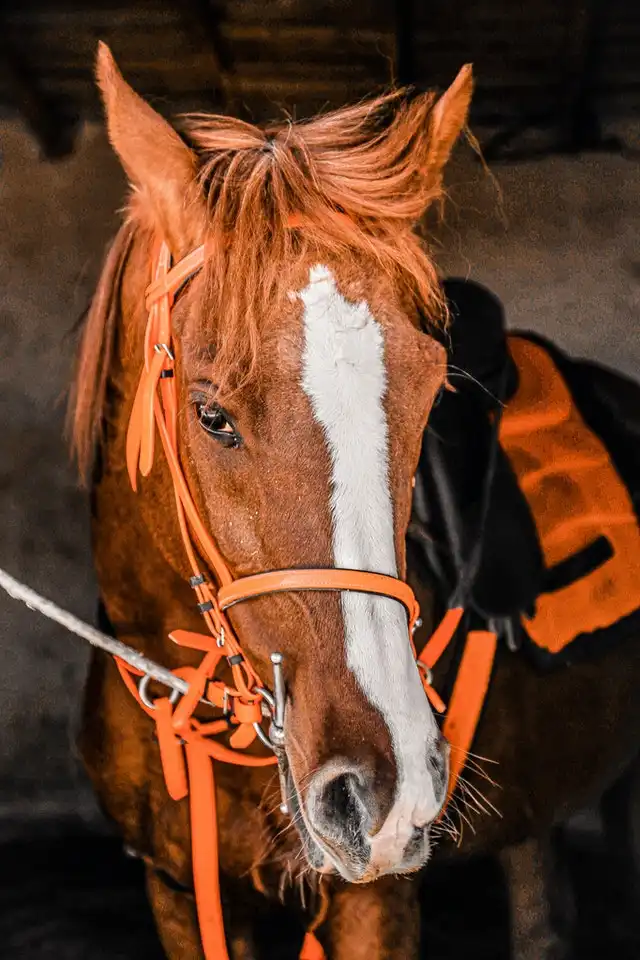The hardest horse bit is the shanked curb bit. It is the most severe bit and is used for more experienced horses. It has a shank that extends down from the mouthpiece, putting pressure on the horse’s tongue and lips.
The bit controls the horse’s movement and guides it in the desired direction. The bit is also important for communication between the horse and the rider. The horse’s mouth is sensitive, so the bit needs to be properly fitted and adjusted to ensure that it doesn’t cause pain or discomfort.
Now we also look at some other bits that can be hardest for your horse.
Top hardest bit:
What is the most comfortable bit for a horse?
There are many factors to consider when finding the most comfortable bit for a horse. The type of bit, the size and shape of the mouthpiece, and how the bit is fitted all play a role in finding the perfect fit.
Some horses prefer a thin, French-style bit that rests lightly on their tongue, while others may do better with a thicker, more substantial bit.
The mouthpiece should be the right size and shape for the horse’s mouth, and it should not be so big that it rubs or chafes the lips.
The bit should also be fitted properly, with the cheeks of the bridle fitting snugly against the horse’s cheeks and the bit resting in the correct position in the horse’s mouth.
If the bit is too big or too small or not fitted properly, it can be uncomfortable for the horse.
What is the mildest bit for a horse?

A bit is a type of horse tack placed in the horse’s mouth to provide control and guidance.
There are many different types of bits, but all of them work on the same principle: they apply pressure to the horse’s mouth, encouraging the horse to obey the rider’s commands.
The mildest bit for a horse is typically a snaffle bit. A snaffle bit is a simple bit that consists of a metal ring with a curved piece of metal or wood attached to it.
The curved piece of metal or wood is placed in the horse’s mouth, and the ring is attached to the bridle.
The snaffle bit applies pressure to the horse’s mouth on two points: the curved piece of metal or wood and the ring. This pressure encourages the horse to obey the rider’s commands.
What bit is suitable for a strong horse?
Many different bits can be used on a horse, depending on the horse’s needs and preferences. However, some bits are better than others for horses that need a lot of strength and power.
The snaffle bit is a good bit for a strong horse. It has a small mouthpiece and applies pressure to the horse’s lips and bars, encouraging him to keep his head down and use his neck muscles. The curb bit is also a good choice for a strong horse.
It has a more extended mouthpiece and applies pressure to the horse’s chin, cheeks, and bars. This bit encourages the horse to use his poll and neck muscles to pull against the rein.
What is the kindest bit to use on a horse?
There is no definitive answer for what the kindest bit is to use on a horse. Some people may say that a snaffle bit is always the best option, as it is less severe than other bits.
Others may argue that a curb bit is more appropriate for a horse that needs more control. Ultimately, the kindest bit to use on a horse will depend on the individual horse’s needs and preferences.
Many different types of bits can be used on a horse, but the kindest bit to use is typically a soft, rubber bit. This type of bit is gentle and will not cause any pain or discomfort to the horse.
It is also essential to ensure that the bit is the correct size for the horse’s mouth to be comfortable and effective.
Are horse bits cruel?
There is a lot of debate surrounding horse bits and whether or not they are cruel. Some people believe that they are, as the bit is placed in the horse’s mouth and used to control its movements.
Others believe that horse bits are a necessary evil, as they allow riders to communicate with their horses and control them effectively.
The main argument against horse bits is that they can be painful for the horse. When a horse doesn’t move in the way the rider wants them to, it can be given a sharp tug on the reins, which can cause pain in the horse’s mouth.
This is why it is necessary to find the right size bit for your horse and ensure it is fitted correctly.

On the other hand, horse bits can be very effective in controlling a horse. They allow the rider to communicate with the horse, telling them what movements to make and when.
This can be very useful when riding a horse, as it allows the rider to stay in control at all times.
So, are horse bits cruel? It depends on your opinion. If you believe that they are painful for the horse, you would likely say they are cruel.
However, if you believe that they are a necessary evil, you may not see them as cruel.
Most common horse bits
There are many different types of horse bits, but some are more common than others. The snaffle bit is one of the most common, and it is made up of a mouthpiece and two rings.
It is usually used on horses just starting or are not yet used to a bridle.
The curb bit is another common type of bit. It comprises a mouthpiece, a shank, and two rings.
It is usually used on more experienced horses or ridden like a dressage discipline.
Conclusion:
Ultimately, we can say it is up to the rider to determine which bit is best for their horse, based on that horse’s individual needs and preferences.

My name is Kenneth E. Johnson and I am an equestrian enthusiast. I have a passion for helping others learn more about horses and their care, and I have written extensively on topics such as nutrition, behavior, health, riding, care, etc.






